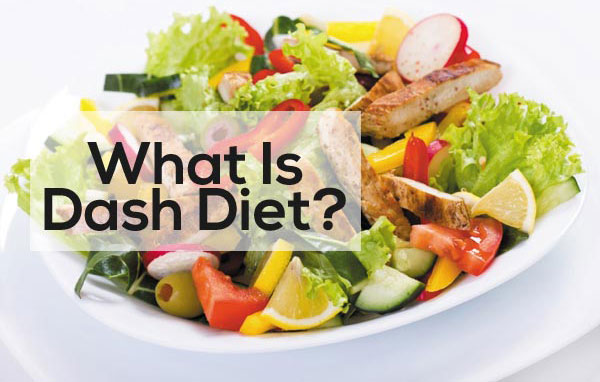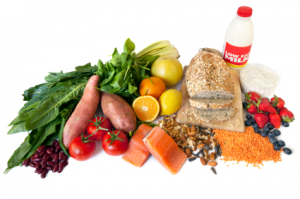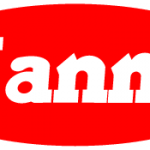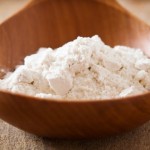By Anthoney J. Andersen – Steroidal.com
When it comes to losing weight, there are many factors involved in helping you reach your goal. Exercise, proper diet and nutrition, getting enough sleep – are all examples of elements that contribute to overall health. We take a look at the DASH Diet.
What exercises should I do? What diets are the best? Should I take supplements?
These are all questions that sometimes intimidate people when they decide that it’s time to make a lifestyle change regarding their health and well-being.
The first step you want to consider when attempting a weight loss plan is diet and nutrition. The foods we put into our bodies can drastically impact how we lose weight and/or put on muscle.
One of the ingredients in most foods (processed foods especially) is sodium. Now, sodium plays an important role in the body, but too much of it can interrupt certain vital organs from functioning properly and can cause some serious health effects down the road.
A popular diet plan that focuses on limiting sodium intake – while promoting healthy weight loss – is the DASH diet.
THE DEVELOPMENT
According to the U.S. National Institutes of Health, the DASH diet was originally created to assist in lowering blood pressure without medication. Since then, research has shown that the DASH diet also reduces the risk of other diseases, including certain types of cancer, stroke, heart disease, kidney stones and diabetes.
“When tested, it was found that the DASH diet lowered blood pressure in those with normal blood pressure, as well as those with high blood pressure,” says Allen Knehans, PhD, chair of the department of nutritional sciences at Oklahoma University Health Sciences in Oklahoma City.
“As initially designed, sodium intake should be around 2,300 mg a day. The DASH diet was even more effective for lowering blood pressure if a lower amount of sodium was consumed,” added Knehans.
The DASH diet has also developed into an effective weight loss plan, and its benefits have led it to become the #1 diet plan by U.S. News & World Report in 2011, 2012, 2013 and 2014.
Sodium is an essential electrolyte and plays a vital role in enzyme operations and muscle contractions. Other benefits that sodium plays in the human body includes improved heart performance, nervous system function and glucose absorption, according to Organicfacts.net.
Although it can be an essential nutrient in any balanced diet, it can also be an extremely harmful constituent on the body as well. A diet that is high in sodium can cause stomach cancer and hypertension.
It is recommended that individuals suffering from kidney disease and edema (swelling caused by excess fluid in your body’s tissues) should restrict their sodium intake in order to protect their bodies from those health risks.
The American Heart Association recommends 1,500 mg as the daily sodium limit for all adults.
FOLLOWING THE DASH DIET
According to Medicinenet.com, following the DASH diet is simple, and consists of consuming common foods available at your local grocery store. The diet includes daily servings from various food groups and bases your serving needs on your daily calorie (energy) requirements.
To determine your calorie needs, you need to consider your age and physical activity level. If you’re looking to maintain your weight, then you should consume as many calories as you burn. However, if you’re looking to lose weight, you should consume fewer calories than you burn, or look into increasing your physical activity level in order to burn more calories than you eat.
You might be wondering what your activity level is. Are you mostly –
- Sedentary? You do only light physical activity that is already incorporated into your day-to-day routine.
- Moderately active? You participate in physical activity that is equal to 1.5-3 miles of walking per day.
- Active? You participate in physical activity that is equal to more than 3 miles of walking per day.
THE FOOD GROUPS
According to Mayo Clinic, the DASH diet focuses on the intake of more vegetables, fruit, low-fat dairy foods and moderate amounts of fish, poultry and nuts. The following is a look at the recommended servings from each food group for the 2,000-calorie-a-day DASH diet:
| Type of Food | Number of servings for 1,600 – 3,100 calorie diets | Number of servings for a 2,000 calorie diet |
| Grains and grain products (include at least 3 whole grain foods each day) | 6-12 | 7-8 |
| Fruits | 4-6 | 4-5 |
| Vegetables | 4-6 | 4-5 |
| Low fat or non-fat dairy food | 2-4 | 2-3 |
| Lean meats, fish, poultry | 1.5-2.5 | 2 or less |
| Nuts, seeds and legumes | 3-6 per week | 4-5 per week |
| Fats and sweets | 2-4 | Limited |
According to Everydayhealth.com, here are some other daily nutritional goals of the DASH diet plan:
- Total fat is 27 percent of calories.
- Saturated fat is 6 percent of calories.
- Protein is 18 percent of calories.
- Carbohydrates are 55 percent of calories.
- Cholesterol is limited to 150 mg.
- Fiber is 30 grams.
THE DASH DIET DRAWBACKS
There is a lot of positive feedback surrounding the DASH diet, however, there is also a few concerns involving the diet as well. One of the concerns that people have is the fact that the diet does not outline a specific way to lose weight.
“It is not designed for weight loss per se, but offers different numbers of servings for the food groups for different calorie levels, so you could follow a weigh-loss diet with this plan,” says Nancy L. Cohen, PhD, RD, professor and head of the department of nutrition at the University of Massachusetts in Amherst.
Some people may also struggle with the high levels of fiber that accompanies the diet. So, it’s recommended that you gradually add high-fiber foods to your daily regimen, in order to avoid bloating and discomfort.
CONCLUSION
Even though the DASH diet was designed to help individuals lower their blood pressure, everyone, healthy or otherwise, can use it.
Eat smart. And stay healthy.








